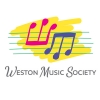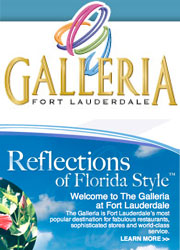Most new South Florida condos owned by investors, second-home buyers
- Details
Only 13 percent of the more than 43,200 South Florida coastal condo units created and sold since the real estate boom began in 2003 are owned by primary users who have filed for tax savings and added property protection under the state's Homestead Exemption legislation, according to a new report from CondoVultures.com.
The percentage of primary users could move even lower as investors and second-home buyers – who do not typically qualify for Homestead Exemption benefits – are the suitors most likely to acquire a majority of South Florida's 5,400 unsold developer units near the coast as of the second quarter of 2011, according to an analysis based on the Sept. 29, 2011 report from the Condo Ratings Agency™.
"Analysts have long suspected that investors and second-home buyers are driving the current trends in the South Florida condo market," said Peter Zalewski, a principal with the Bal Harbour, Fla.-based real estate consultancy Condo Vultures® LLC. "This report finds that primary users account for only about one out of every 10 condo transactions in a new project in South Florida's seven largest coastal markets. Foreign investors with strong currencies and domestic second-home buyers are clearly the lifeblood of the South Florida coastal condo market right now from Greater Downtown Miami north to Downtown Fort Lauderdale up to Downtown West Palm Beach.
"Given the report's findings, it is quite possible that a majority of the coastal condos built during the South Florida real estate boom are now being occupied by renters."
Determining the ratio of renters versus primary users – a key criterion for conventional financing - in a condo project is a challenging task as no formal paperwork is required to be filed with an independent third party or the government, according to a new CondoVultures.com report.
Lending Standards Exclude Many Investor-Rich South Florida Condo Projects
Fewer than one of every eight South Florida condominium complexes in the region's seven largest coastal markets have adequate verifiable homeownership statistics to warrant lending approvals from the mortgage giants - based on a new report from CondoVultures.com.
The Sept. 29, 2011 report - which examined Florida Homestead Exemption declarations filed by the primary users of nearly 125,000 condo units in 2011 - found that less than 175 South Florida projects out of a pool of 937 projects east of Interstate 95 near the coast have a high enough verifiable concentration of Owner-Occupied Residents to meet a key financing requirement set by purchasers of mortgages on the secondary market.
The "Owner-Occupancy Rate" in condominium projects is a core criterion for mortgage lending project decisions. South Florida's 2011 coastal condominium market has a high concentration of non-Homestead Exempt properties and an indeterminate second-home ownership rate.
90% Of New Downtown Miami Condos Owned By Investors, Second-Home Buyers
Primary users own fewer than 20 percent of the nearly 31,500 units that have been created and sold in the 60-block stretch of Greater Downtown Miami since the 1960s, according to a new report from CondoVultures.com.
The percentage of primary users is poised to drop even lower as investors and second-home buyers – who do not typically qualify for the Homestead Exemption benefits that primary users receive – are the suitors most likely to acquire a majority of the existing nearly 2,300 unsold developer units in Greater Downtown Miami as of the second quarter of 2011, according to an analysis based on the Sept. 29, 2011 report from the Condo Ratings Agency™.
Of the more than 11,500 condo units created through the year 2002, some 37 percent - or more than 4,200 units - in Greater Downtown Miami are owned by primary users who have obtained Homestead Exemption status from Miami-Dade County, according to government records.
Boca Raton Condo Market Enjoys South Florida's Highest Concentration Of Primary Users
More primary users - based on percentages - own their condos with tax saving Homestead Exemption status in the Boca Raton / Deerfield Beach area than in any of the seven largest coastal markets in South Florida, according to a new report from CondoVultures.com.
Primary users who have obtained Homestead Exemptions own 41 percent of the nearly 9,100 condos created and sold in the Boca Raton / Deerfield Beach market, according to an analysis based on the Sept. 29, 2011 report from the Condo Ratings Agency™.
By comparison, the Downtown Fort Lauderdale and the Beach coastal market ranks a distant second with a primary user ownership rate of 33 percent - nearly 4,200 units - in an area where more than 12,700 units have been built and sold, according to the report.
Oceanfront Condo Development Site Trades For $24 Million In Sunny Isles Beach
The site of the proposed Regalia ultra-luxury condo highrise with 40 expansive units fronting the Atlantic Ocean in the Northeast Miami-Dade County's city of Sunny Isles Beach has been acquired for a 200 percent premium over the current assessed value, according to a new report from CondoVultures.com.
The buyer, Aventura-based Golden Beach Developers LLC with Louis R. Montello as the manager and registered agent, acquired the site on Sept. 15, 2011 at a recorded price of $24 million, according to Miami-Dade County records.
The nearly 50,000-square-foot site at 19505 Collins Ave. – also known as State Road A1A – has a 2011 assessed value of less than $8 million, according to the Miami-Dade County Property Appraiser's Office.
Prior to the South Florida real estate crash, a 43-story tower with only one unit per floor was proposed for the site that borders the wealthy enclave of Golden Beach in the most northeastern portion of Miami-Dade County, according to government records.
Condo Vultures® Deep Discounts of the Week: Waterfront Condos
Here is a list of some of the biggest discounts in the Vultures Database™ on waterfront condo units in Miami-Dade, Broward, and Palm Beach counties. For information, contact Condo Vultures® Realty LLC at 305-865-5629.
Miami-Dade County:
Aventura: Condo on the Intracoastal Waterway discounted 35 percent.
Bal Harbour: Luxury condo on the ocean discounted 38 percent.
Bay Harbor Islands: Condo shortsale on the bay reduced 26 percent.
Brickell Avenue: Condo shortsale on the bay reduced 27 percent.
Coconut Grove: Condo on the water discounted 24 percent.
Coral Gables: Condo on a canal discounted 33 percent.
Downtown Miami: Condo on the water reduced 20 percent.
Miami Beach: Condo shortsale on the bay reduced 63 percent.
South Beach: Condo shortsale on the bay discounted 62 percent.
Sunny Isles Beach: Condo on the ocean discounted 47 percent.
Surfside: Oceanfront condo reduced 33 percent.
Broward County:
Dania Beach: Condo on a lake discounted 17 percent.
Fort Lauderdale: Condo shortsale on a river reduced 39 percent.
Hallandale Beach: Shortsale condo on the ocean discounted 44 percent.
Hollywood: Condo shortsale on the ocean reduced 52 percent.
Pompano Beach: Condo on a canal discounted 27 percent.
Wilton Manors: Condo on a river reduced 11 percent.
Palm Beach County:
Boca Raton: Oceanfront condo discounted 40 percent.
Boynton Beach: Condo on the Intracoastal Waterway discounted 41 percent.
Delray Beach: Condo on the Intracoastal Waterway reduced 30 percent.
Palm Beach: Condo shortsale on the Intracoastal Waterway reduced 67 percent.
West Palm Beach: Condo shortsale on the Intracoastal Waterway discounted 23 percent.
Peter Zalewski of Condo Vultures® can be reached at 800-750-0517 or by email at peter@condovultures.com. Don't forget to sign up for our weekly Market Intelligence Report™ for detailed condo reports. Looking for a property at a deep discount? Take a peek at the Vultures Database™ or view our Video Library. Looking for bulk projects direct from developers or lenders? Visit the Condo Vultures® Bulk Deals Database™. Our new books, the Official Condo Buyers Guide to Miami™, Official Condo Buyers Guide To South Beach™,and Official Condo Buyers Guide To Sunny Isles Beach™, are now available. Need a historical perspective? Check out the four-book series Miami's Great Condo Crash: A Chronicle Of The Boom And Bust™ . Want to see every foreclosure filed in South Florida since 2007? Check out our Foreclosure Database™.
Business Directory
![]()
Click Here to Claim or Submit Your Business Listings for Free!





















